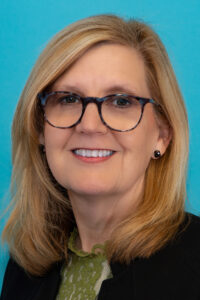Nearly all parents of children born with severe-to-profound bilateral hearing loss want their child to develop spoken language and literacy skills commensurate with those of their peers with healthy hearing. This is important for social and academic development.

Lisa Davidson, PhD, and her lab are determined to help optimize the benefits of cochlear implants (CIs) and hearing aids (HAs) to maximize spoken language and literacy development in children with hearing loss. Davidson’s teammates include Rosalie Uchanski, PhD, assistant professor of otolaryngology, Sarah Pourchot, and Christine Brenner.
“Long-term verbal abilities and ultimate academic success depend on making the right device decisions at the youngest age possible,” said Davidson. Her lab seeks to establish empirically driven guidelines for determining the best hearing-device combination (one CI and one HA or two CI) for pediatric patients during their critical language-development years of birth to four years of age.
For young children with severe-to-profound HL, clinicians now unanimously agree that two ears/two devices are better than one ear/one device. For some children, early receipt of two CIs provides them the best opportunity to develop good spoken language skills, helping them to identify and produce the phonetic elements of speech.
For other children, the use of a CI with a HA at the non-implanted ear may be the best option. A HA transmits unique acoustic properties of speech not available through CIs, such as voice and emotion recognition and phrase boundary and intonation cues that facilitate early language learning.
In spite of this, few research studies have examined which children would benefit from early acoustic input from a HA along with a CI for some period of time. As CI are increasingly considered for children with more residual hearing, a careful examination of the evidence for recommending this two-device option is crucial.
Based on a recent NIH-funded longitudinal study of 117 children, from across the USA, aged 5-8 years with either 2CIs or CI+HA, the Davidson lab identified ranges of residual hearing levels that can guide clinicians in making two-device recommendations for individual pediatric patients.
“In general, we found that children with hearing levels better than approximately 90 dB HL are likely to have better spoken language and reading skills when CI+HA devices are used in the first [approximately] four years of life than when two CIs are used in these early years,” said Davidson.
Davidson’s current study focuses on the long-term consequences of these early device decisions. During early elementary grades, most children with CIs move from classrooms specialized for those with impaired hearing to general education classrooms. Compared to specialized classrooms, general classrooms have more occupants, more noise, and more visual distractions.

Yet, it is in these classrooms where children with CIs must acquire complex language, communication and literacy skills. They must learn to use vision to supplement auditory input, making audiovisual speech perception and binaural listening skills critical to their academic, communication, and social functioning, says Davidson.
“For our current NIH-funded project, we are evaluating these skills in the same children tested in the previous study who have now reached early adolescence,” said Davidson. “The follow-up assessment battery examines whether the early acoustic experience via a hearing aid contributes to, or detracts from, their audiovisual and binaural listening skills which are implicit in ’real world’ communication and socialization.”
To test the children in this large-sample longitudinal study, Davidson’s research team had been traveling to schools for the deaf and to CI clinics across the country. Currently, COVID-19 has prevented the lab team from conducting on-site, in-person tests. During this period of restricted travel and restricted in-person meetings, the lab team has been administering standardized spoken language tests (CASL-2) and quality-of-life questionnaires remotely. They are also working on converting other portions of their test battery to an online format. Once travel can be resumed, these efforts should help minimize the amount of time spent doing on-site testing.
The Davidson lab collaborates with colleagues here at Washington University and other sites to examine the effects of cochlear implants and hearing aids on various outcomes measures including literacy, hearing quality of life, binaural processing, and audiovisual perception. Collaborators include Jill Firszt, PhD, Ann Geers, PhD, Heather Grantham, PhD, Judith Lieu, MD, and Brent Spehar, PhD.
For more information, please contact Lisa Davidson or visit the Davidson Lab website.
